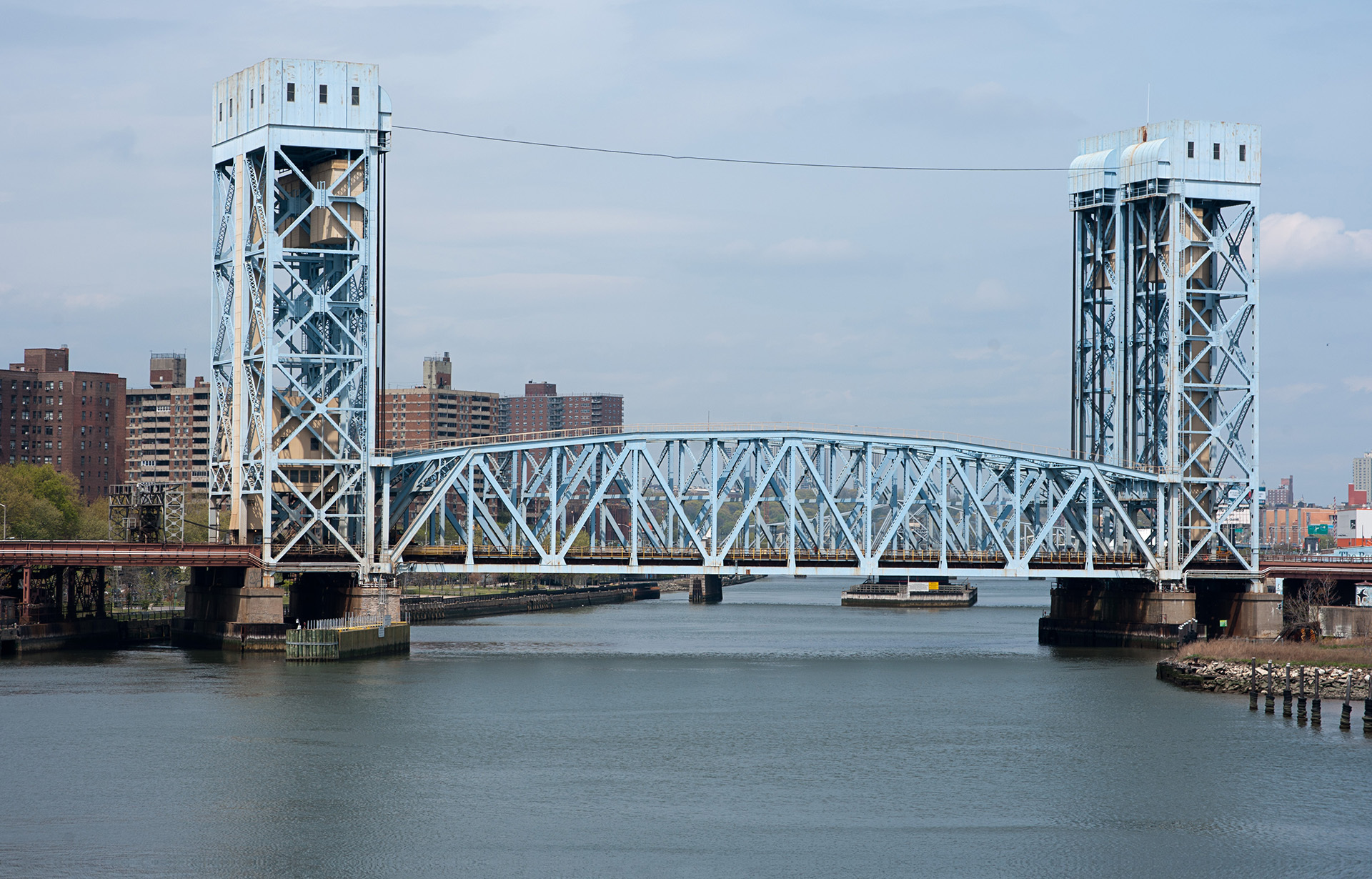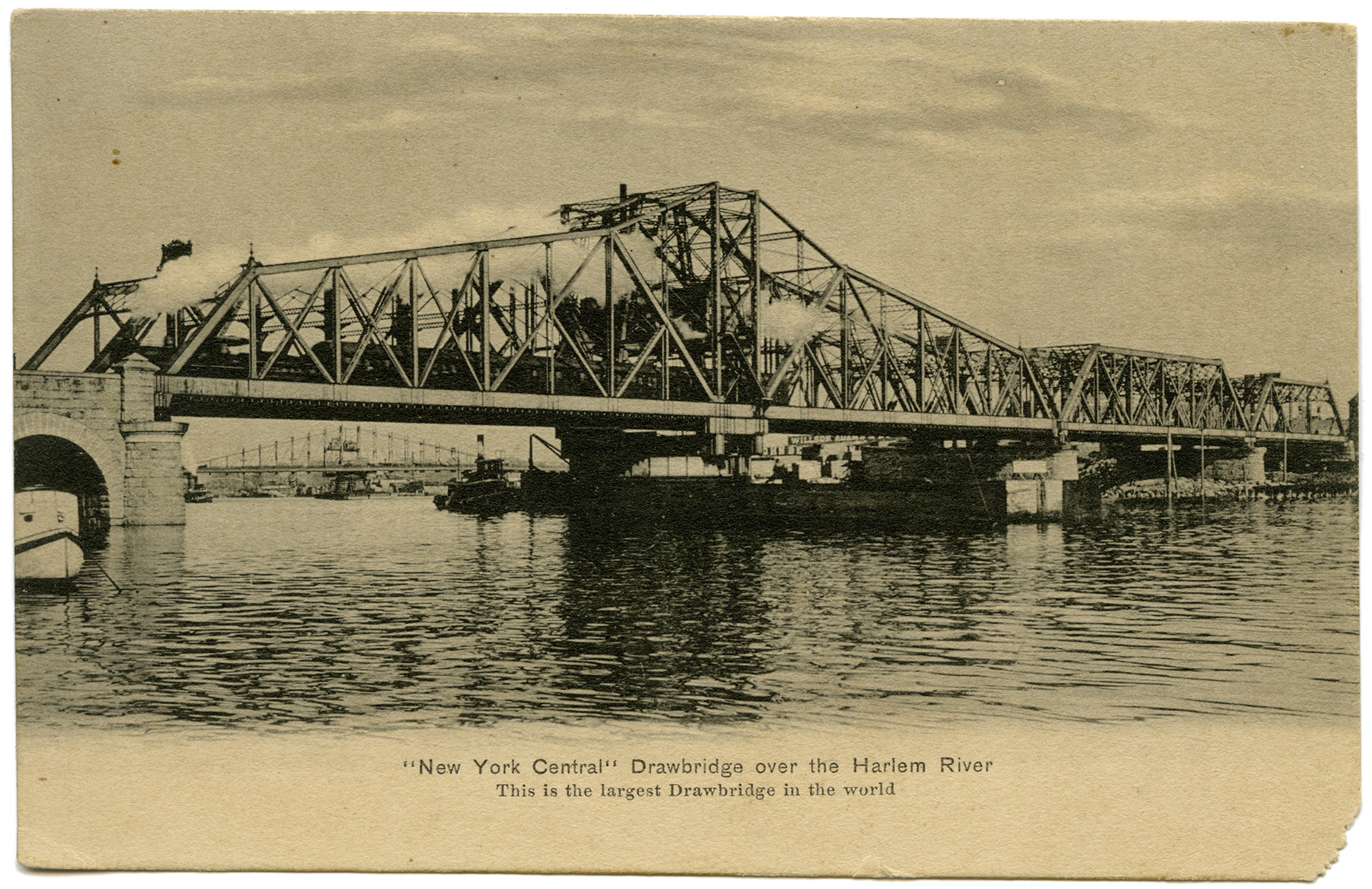Park Avenue Bridge
Then
The first bridge to cross the Harlem River at the location of the current Park Avenue Bridge was a wooden swing bridge with two railroad tracks that was only seven feet above mean high tide, built by the New York and Harlem Railroad in 1841. By the 1860s its center pier had been hit numerous times by passing ships, so the New York Central Railroad built a 90-foot iron swing span was built in 1867 to replace the wooden structure.
In 1892, new bridge regulations were adopted to coincide with the completion of the Harlem River Ship Canal; this led to more boat traffic on the river and an era of new bridge construction across it. The bridge pictured here is a 4-track steel swing bridge, completed in 1891 by the New York Central Railroad. It was one of the first 4-track drawbridges even built, and was designed by A.P. Boller (who also designed the Macomb’s Dam Bridge and several others on the Harlem River). The cost of the bridge was split between New York City and the New York Central Railroad.

Park Avenue Bridge, 2012
Now
The swing bridge carried the New York Central and the New Haven Railroads until 1954, when a new vertical lift bridge opened just upriver of the swing. It is designed with two parallel two-track spans that are each 340 feet long. Its clearance when closed is 25 feet and raises to 125 feet.
The bridge changed ownership several times during the 1960s, and is now operated the Metropolitan Transit Authority (MTA) and carries Metro-North trains.
